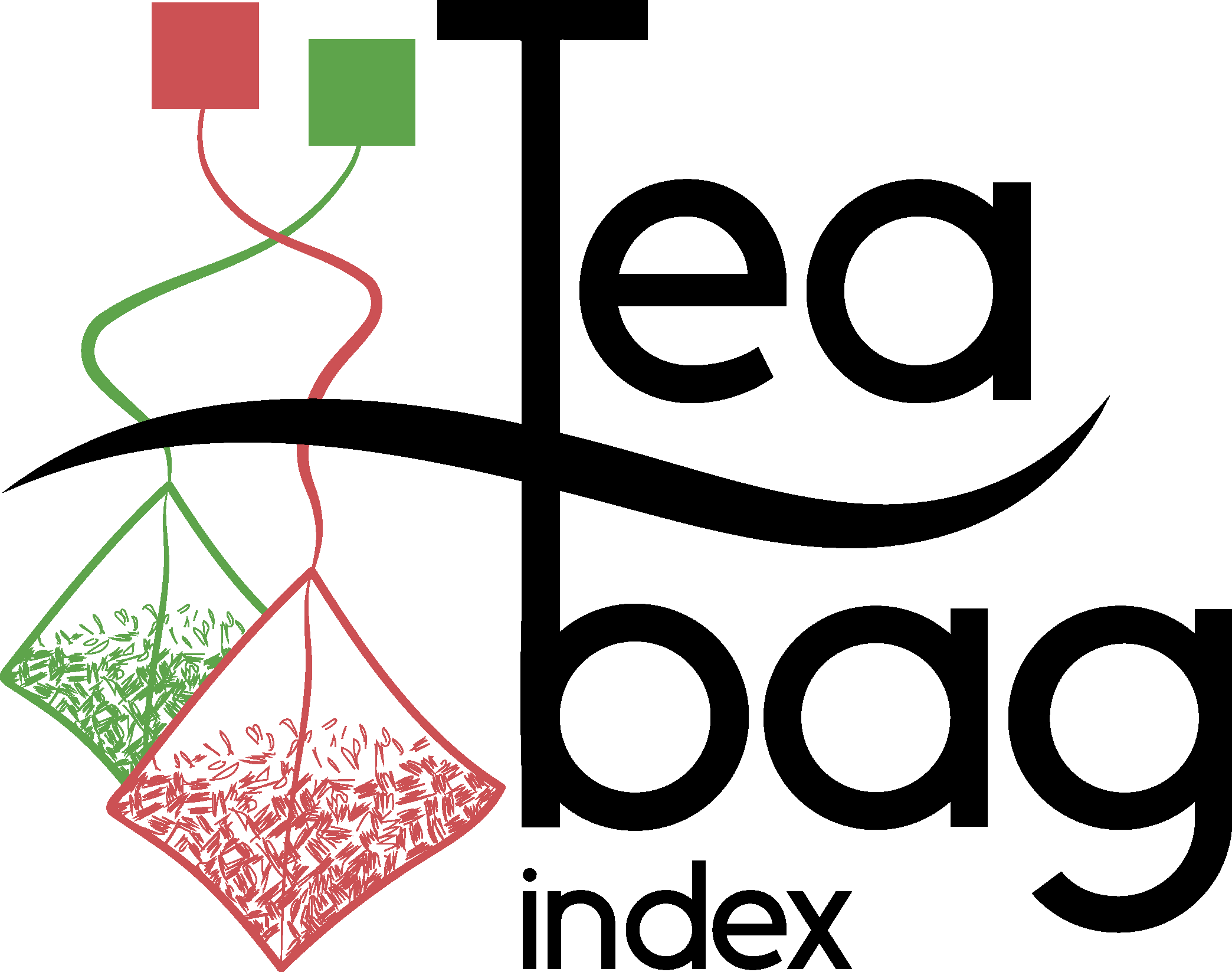Researchers, please check the more elaborate scientific protocol
Examine Your Soil with Tea Bags!
To get reliable results using the TBI method, you need to bury three bags of Rooibos tea and three bags of green tea at each location. The tea bags then need to remain buried for approximately three months.
If you wish, you can bury tea bags in different locations, such as a forest and a meadow, and then compare decomposition between different natural settings.
PLEASE NOTE In 2024, Lipton discontinued ‘our’ green tea. Since any comparison between old and new tea is going to be different, we do not recommend using other types of tea to calculate k and S at the moment.
If you however want a measure of mass loss within your sites, and you want to use a standardised tea, we would recommend Japanese Sencha, but you can also source tea locally if you find tea in non-paper bags and make your own local comparison.
This is how it’s done
- Take three bags of Green Tea (Japanese Sencha EAN 5 063270 101797) and three bags of red Rooibos tea (Lipton Infusion Rooibos: EAN 5 063270 101612).
- Mark the white side of the tea bag label with a waterproof pen, so that you can distinguish the bags (e.g., R1, G3). The other side of the label is made of paper and will disappear over time.
- Optional: Weigh the tea bags on a scale with at least two decimals (0.01).
- Dig 6 holes 15 cm apart. Each hole should be 8 cm deep. Place one tea bag in each hole, and make sure the labels are visible above ground for easy retrieval when it's time to dig them up. Then, firmly press the soil down with your hands and mark the location of each buried tea bag with a stick.
- It's a good idea to draw a map showing where and how the tea bags are buried.
- Note the starting date of the experiment, as well as other information about the location, to help you find the tea bags when it is time to retrieve them.
- Set a reminder on your phone's calendar to get notified when it's time to retrieve the bags.
- After approximately 90 days (in tropical climates less time is needed, e.g 60 days), use your map to locate the buried tea bags.
- Gently recover the tea bags to avoid damaging the bags or the markings. Do not pull on the labels, as they might easily break from the buried tea bags. You can dig up a larger lump of soil and then recover the bag from it. Be carefull when pulling on the string as it breaks easily.
- Note the date!
- Carefully remove soil and roots that may be stuck to the tea bags. IMPORTANT: Do not use water to clean the bags, and make a note if anything went wrong or if you observe anything unusual on the tea bags (fungus, roots growing into the bag, holes in the bag, etc.).
- Let the tea bags dry in a warm and sunny place (e.g., on a windowsill above a radiator) for approximately 3–4 days, until they are completely dry.
- Weigh the tea on a scale with at least two decimals (0.01). There are two ways to weigh the tea:
- Weigh the entire tea bags, one at a time. Remove the label before weighing but leave the string attached. Record the weight of each tea bag on the form.
- Take out and weigh the tea without the bag. Be careful not to lose any content. Record the weight of the tea in the form.
* We recommend weighing the contents without the bag, but both options are acceptable. Fill in the option you chose on the form, either "Tea and bag" or "Only tea".
- Upload your results HERE.
Tea bags in research
For researchers to be able to use and compare the results, all participants need to use the same type of tea. Therefore it is very important that you use the right type of tea.
Please use the following tea types:
Green tea: Lipton Indonesian tea Sencha tradition: EAN 87 22700 05552 5. Available sporadically.
Green tea: Lipton Japanese Sencha: EAN 5063270101797. Cannot be used to calculate k and S!
Rooibos tea: Lipton Infusion Rooibos: E5 063270 101612. This is the exact equivalent of EAN 87 11327 5143 48 which is not sold anymore.
Over the years, Lipton has used different tea bag materials. By comparing the datasets of the different bag types we hope to gain valuable insights on the decomposer groups across the globe. Therefore, it is very important that you indicate which tea bags you used when you submit your data or when you publish your data somewhere.
If you cannot find the right tea in your local shop, you can order it online. Dutchsupermarket sponsors our project and provides 10% discount when you apply the coupon code TBI10 in the shopping cart.
One study has compared different types of tea: Middelanis T, Pohl CM, Looschelders D, and Hamer U (2023) New directions for the Tea Bag Index: Alternative teabags and concepts can advance citizen science. Ecological Research 38:690-699.
We are working on a comparison between different tea bags.
